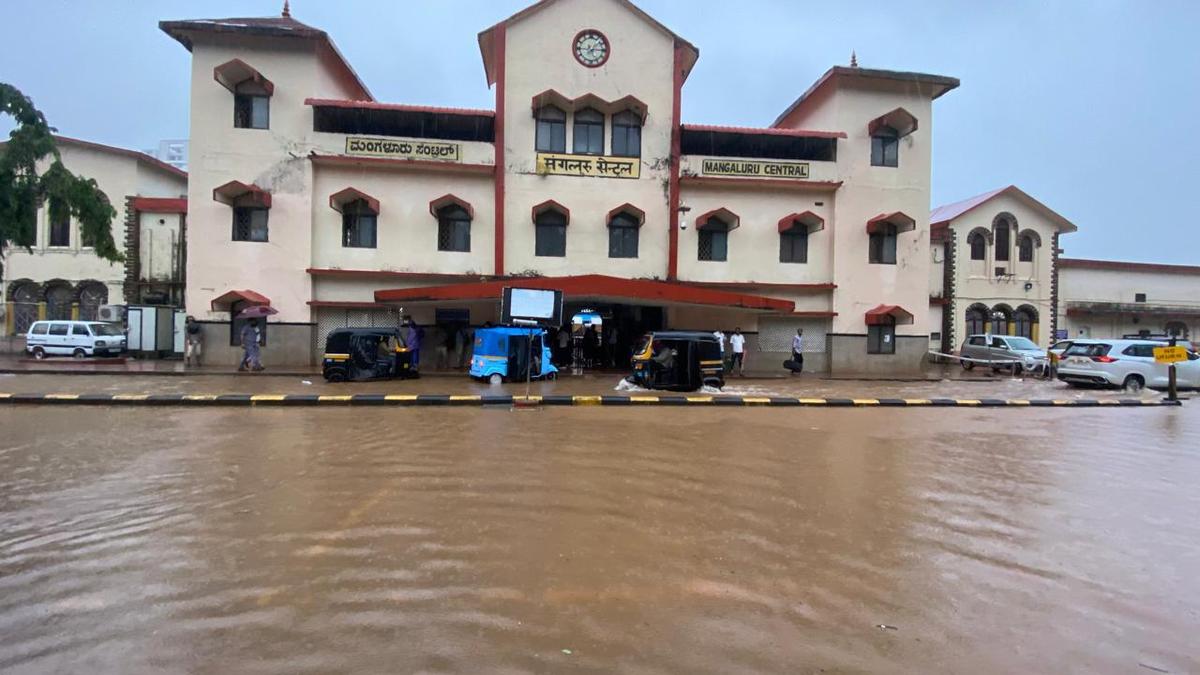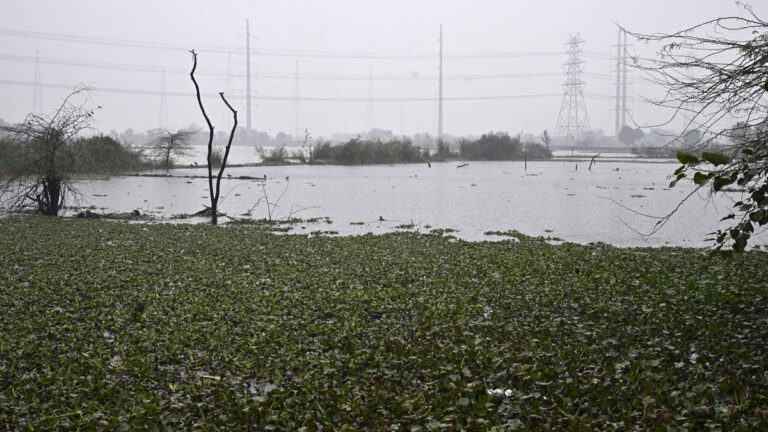
The flash floods that occurred in Mangaluru on June 14 were the result of a combination of very heavy rain (over 200 mm), encroachment of major stormwater drains, and the high tide (1.56 m from 2.44 pm) in the Arabian Sea, according to experts.
| Photo Credit: H S MANJUNATH
The flash flood Mangaluru witnessed on June 14 was triggered by a combination of very heavy rain (over 200 mm), encroached major stormwater drains, and the high tide (1.56 m from 2.44 p.m.) in the Arabian Sea, according to experts.

The Central Business District, including Mangaluru Central Railway Station, received 210 mm rainfall from June 14 morning to June 15 morning in Mangaluru.
| Photo Credit:
H S MANJUNATH
The Central Business District received over 210 mm rain from 8 a.m. of June 14 to 8 a.m. of June 15 with over 60 mm rainfall occurring between 2.30 p.m. and 4.30 p.m. on June 14.
Mangaluru taluk received 101.5 mm rainfall during the 24 hours while Belthangady taluk received 112.2 mm and Bantwal taluk recorded 105.3 mm during this period. Rainwater from Belthangady and Bantwal taluks majorly drains into the Netravati river.
At the same time, the riverine system around Mangaluru, that gets influenced by the Arabian Sea, was witnessing high tide of 1.56 metre from 2.44 p.m.
Consequently, the rainwater did not drain out easily and instead stagnated in all the major stormwater drains, aggravating the flood situation, said a senior official in the Fisheries Department.
“All the water bodies, including the Netravati and the Phalguni rivers, and the major stormwater drains connected to them around Mangaluru, are tidal influenced. If very heavy rain occurs during high tide, floods would follow,” said an additional director-level officer of the department.
Unrestricted growth of real estate projects
The officer said paddy fields and shallow areas around the city, including in Jeppinamogaru, Kannuru, Adyar, Yekkuru, Kuloor, Baikampady, Pandeshwara, Kodialbail, and Bolooru, used to hold the excess rainwater as well as the high tide-influenced floods a few decades ago. They were connected to the naturally formed major stormwater drains, and acted as the buffer zone.
Using these natural water-holding areas to construct residential and commercial buildings over the years has shrunken the rainwater-holding capacity of the region. The only available space for rainwater these days are the major stormwater drains, which again have been encroached upon at places.
S. Balakrishna, a retired superintending engineer with the Public Works Department, said improperly designed and constructed drainage system, unrestricted development along highways, encroachment of stormwater drains, and massive land filling were the reasons for flooding in Mangaluru.
Create lakes
While reclamation of the conventional water-holding bodies appears near impossible, the administration could create a few lake-like bodies along major stormwater drains to hold the excess water, the fisheries official suggested. Those water bodies could also act as groundwater recharging points during the summer, he felt.
Published – June 17, 2025 01:31 pm IST



